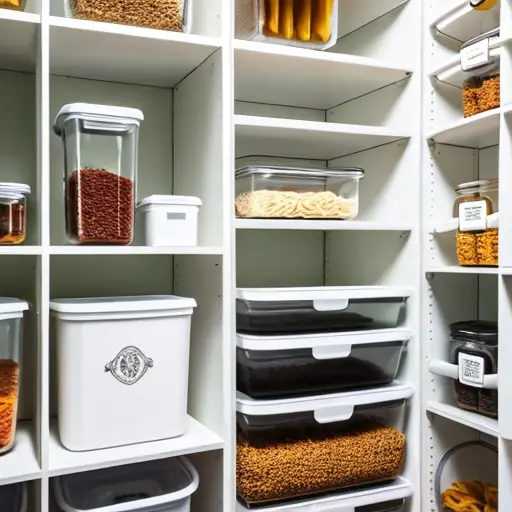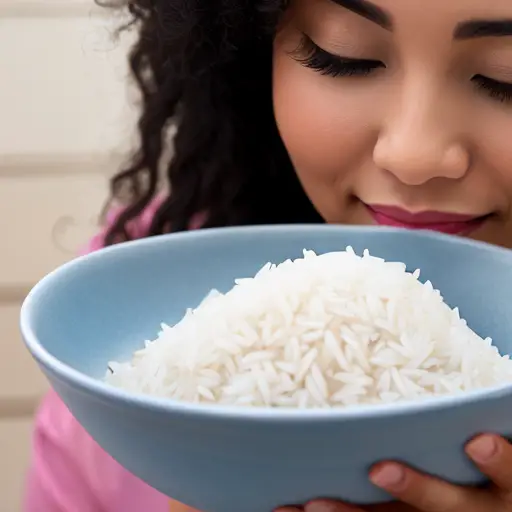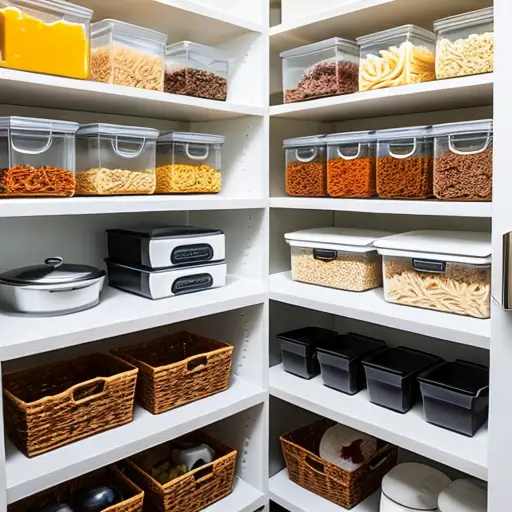Rice is a staple food that is consumed by millions of people around the world. It is versatile, nutritious, and can be stored for long periods. However, improper storage can lead to spoilage and loss of quality. In this comprehensive guide, we will explore the best practices on how to store rice in the pantry to ensure its freshness, flavor, and longevity.
Using the right storage solutions, such as airtight containers and mylar bags, can significantly prolong the shelf life of your rice, ensuring that you always have fresh grains ready for your culinary creations.
How to Store Rice in the Pantry?
Rice is highly susceptible to moisture, pests, and changes in temperature. Follow these steps to store rice in your pantry properly:
Choose the Right Container
Using airtight containers is essential for storing rice. Opt for glass, plastic, or metal containers with a tight-fitting lid. Make sure the container is clean and dry before transferring the rice.
Consider Packaging
If the rice you purchase comes in paper or cardboard packaging, transferring it to an airtight container is advisable. There must be more than the original packaging to protect against moisture and pests.
Find the Ideal Location
Select a cool, dry, dark location in your pantry to store the rice. Avoid places near heat sources, such as the stove or oven, as they can affect the quality of the rice. Direct sunlight should also be avoided.
Control the Temperature
Rice is best stored at room temperature, ideally between 50°F and 70°F (10°C and 21°C). Fluctuations in temperature can lead to the growth of bacteria or mold. Avoid storing rice in the refrigerator, as the moisture can cause it to spoil faster.
Protect from Moisture
Moisture is the primary enemy of rice storage. To prevent moisture absorption, consider adding a desiccant packet or an oxygen absorber to the container. These packets can be found in stores or purchased online.
Keep Away from Pests
Pests like weevils and bugs can infest rice if not stored properly. Consider placing a bay leaf or dried chili pepper in the container to keep pests at bay. These natural deterrents can help protect your rice from unwanted visitors.
Avoid Frequent Opening
Every time the container is opened, warm air and moisture can enter, potentially reducing the shelf life of the rice. Store rice in a quantity that you typically consume within a reasonable time to minimize the need for frequent openings.
Monitor for Spoilage
Regularly inspect your stored rice for any signs of spoilage. Look out for discoloration, foul odors, or the presence of insects. If any of these signs are detected, discard the rice immediately.
How Do You Store Rice to Keep It Fresh?

Storing rice correctly is essential to maintaining its freshness and preventing contaminants such as pests and mold. Here’s how you can store rice to keep it fresh:
- Dry and Cool Environment: Always store rice in a cool and dry place. This prevents the growth of mold and bacteria.
- Airtight Containers: Rice should be stored in airtight containers or heavy-duty plastic bags. This keeps out pests like weevils and prevents moisture from reaching the rice.
- Seal Properly: Ensure the container or bag is sealed properly after every use. This prevents exposure to contaminants and moisture.
- Away from Strong Odors: Rice can absorb strong odors, so avoid spices or other items with a strong scent.
- Regularly Check for Pests: Even when stored properly, it’s good practice to check the rice for signs of pests or mold. If any contamination is found, discard the affected rice immediately.
What is the Best Thing to Store Rice In?
The ideal storage solution for rice includes the following:
- Glass Jars: Glass jars with airtight lids are perfect for storing rice. They provide a clear view of the contents, ensuring any contaminants are easily noticeable.
- Plastic Airtight Containers: These are commonly used and effective. Ensure the container is food grade and BPA-free for safety.
- Vacuum-Sealed Bags: For long-term storage, vacuum-sealing rice removes the air and can prolong the shelf life.
- Mylar Bags: Combined with oxygen absorbers, mylar bags are excellent for long-term rice storage. They keep light, air, and moisture out, preserving the rice’s freshness.
How Long Can Uncooked Rice Be Stored?

The shelf life of uncooked rice depends on its type:
- White Rice: White rice, when stored properly, can last up to 4-5 years in the pantry. However, it’s best to use it within 1-2 years for optimal freshness.
- Brown Rice: Due to its higher oil content, brown rice has a shorter shelf life. It can last around 6 months in the pantry, but if stored in the refrigerator, it can last up to 12 months.
- Wild Rice: Wild rice can be stored in the pantry for 6-8 months. For prolonged freshness, refrigeration is recommended.
- Arborio, Jasmine, and Basmati Rice: These specialty rice can last around 1-2 years in the pantry when stored correctly.
Always remember the storage environment is the key to extending the shelf life of uncooked rice. Ensure it’s kept in a cool, dry place, away from moisture, pests, and strong odors.
Properly storing rice is essential for maintaining its freshness and nutritional value. Using the right storage solutions, such as airtight containers and mylar bags, can significantly prolong the shelf life of your rice, ensuring that you always have fresh grains ready for your culinary creations.
Most Common Rice Types and Details About Them

Rice, a staple food for a significant portion of the world’s population, comes in various types. Each type possesses unique characteristics suitable for different culinary applications. Here’s a detailed look at the most common types of rice:
White Rice
- Description: This rice has had its husk, bran, and germ removed, which gives it a white color.
- Cooking Features: It’s often stickier than other types, especially the short-grain variety.
- Uses: Suitable for various dishes, from stir-fries to desserts.
Brown Rice
- Description: Only the husk is removed, leaving the bran and germ intact. This gives it a nutty flavor and a chewier texture than white rice.
- Cooking Features: It takes longer to cook than white rice but retains more nutrients due to the bran.
- Uses: It can be used in any dish where white rice is used but is especially good in salads and bowls where its chewy texture can shine.
Jasmine Rice
- Description: A long-grain variety originating from Thailand, known for its fragrant aroma reminiscent of jasmine.
- Cooking Features: It’s slightly sticky and becomes fluffy when cooked.
- Uses: Popular in Southeast Asian dishes like Thai curries and Vietnamese dishes.
Basmati Rice
- Description: A long-grain rice variety from the Indian subcontinent known for its distinct aroma and flavor.
- Cooking Features: It’s fluffy and non-sticky when cooked, with separate grains.
- Uses: Essential for Indian dishes like Biryani and pilafs.
Arborio Rice
- Description: Short to medium-grain rice is known for its high starch content.
- Cooking Features: It releases more starch during cooking, leading to a creamy consistency.
- Uses: Commonly used in Italian dishes, especially risotto.
Black Rice (Forbidden Rice)
- Description: Has a black hue which turns deep purple when cooked. It’s high in antioxidants.
- Cooking Features: It has a nutty taste and a slightly chewy texture.
- Uses: Great for salads, bowls, and even desserts.
Wild Rice
- Description: Not true rice but the seed of an aquatic grass. It’s native to North America.
- Cooking Features: It has a chewy outer sheath and a tender inner grain.
- Uses: Commonly mixed with other rice in pilafs or salads.
Red Rice
- Description: It has a reddish-brown husk and is high in nutrients.
- Cooking Features: Nutty flavor with a slightly chewy texture.
- Uses: Suitable for salads, bowls, and as a side dish.
Sticky Rice (Glutinous Rice)
- Description: Despite the name, it doesn’t contain gluten. It’s called ‘glutinous’ due to its glue-like sticky texture.
- Cooking Features: Very sticky when cooked.
- Uses: Essential for Asian desserts and dishes like mochi and mango sticky rice.

Parboiled Rice (Converted Rice)
- Description: It is partially precooked in its husk, which makes it more nutritious than regular white rice.
- Cooking Features: Firm and less sticky than regular white rice.
- Uses: Suitable for dishes that require rice with a firmer texture.
Understanding the unique characteristics of each rice type can enhance your culinary adventures. Whether aiming for a creamy risotto or a fluffy pilaf, choosing the right rice is key to achieving the perfect dish.
FAQs
Can I store rice in the freezer?
While storing rice in the freezer is possible, it is not recommended. The moisture content in the freezer can cause the rice to become mushy when thawed.
How long can I store rice in the pantry?
Rice can be kept in the pantry for up to one year when stored properly. However, consuming it within six months is advisable for optimal freshness and flavor.
Should I wash rice before storing it?
Washing rice before cooking, not before storing it is generally recommended. Washing rice before storage can introduce moisture, making it more susceptible to spoilage.
Can I store different types of rice together?
It is best to store different types of rice separately to maintain their flavors and textures. If stored together, the aroma and taste of one type of rice may transfer to another.
Can I store rice in a plastic bag?
While a plastic bag may be a temporary solution, there are better options for long-term storage. Plastic bags are not airtight and can allow moisture and pests to enter.
Is it safe to eat rice with weevils?
It is best to discard rice infested with weevils or any other pests. Consuming weevils or their eggs can lead to health risks.
Conclusion
Knowing how to store rice in the pantry is essential to preserve its quality and freshness. Following the steps outlined in this guide ensures that your rice remains free from moisture, pests, and spoilage. Remember to choose the right container, control the temperature, and regularly inspect your stored rice for any signs of spoilage. Proper storage techniques allow you to enjoy delicious and nutritious rice for an extended period.

